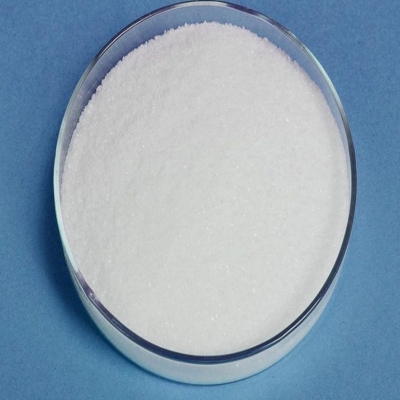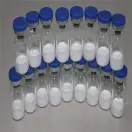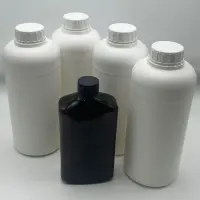Interpretation of China's 2007 edition of the "Chronic Heart Failure Diagnostic and Treatment Guide"
-
Last Update: 2020-07-02
-
Source: Internet
-
Author: User
Search more information of high quality chemicals, good prices and reliable suppliers, visit
www.echemi.com
Over the past 10 to 15 years, the goal of treatment for heart failure has shifted from improving hemodynamics to blocking neuroendocrine hyperactivation, improvingheartremodeling, improving quality of life, and extending lifeIn order to adapt to the development of medicine and keep doctors at all levels of china up to date, the 2007 edition of the Guidelines for The Diagnosis and Treatment of Chronic Heart Failure (the Guide) was officially published by the Expert Group on Heart Failure in ChinaThis article focuses only on the new additions or modifications to the GuideHighlightthe key drug treatment effects
in terms of treatment, the focus of this Guide is still on drug treatmentThe application of angiotensin II receptor antagonists (ARB) and aldosterone receptor antagonists was greatly changedThe Foundation of Heart Failure Treatment: DiureticsGuidelines re-emphasize the foundation and key role of diuretics in the treatment of heart failure, and diuretic control to relieve heart failure symptoms is "immediate" and is the basis of any other effective "biological treatment"Of course, in chronic heart failure, drugs must be used to inhibit intercom and renal-angiotensin-aldosterone system (RAAS), because diuretics can only control symptoms and fluid retention, not improveheartremodeling and survivalHeart failure therapy key: Drugs that inhibit intercom and RAASACE inhibitor angiotensin conversion enzyme inhibitors (ACEI) are the cornerstones of the treatment of heart failure and are recommended in all guidelines as class IAThe beta blocker "guidelines" once again clearly affirmed the irreplaceable first-line position of beta blockers in chronic heart failure therapy, and are recommended for class IA Long-term treatment of beta blockers can not only improve clinical conditions, left ventricular function and ventricular remodeling, but also improve the survival rate by 34% to 35% on the basis of standard treatment (diuretics, ACEI, etc.), and is the only effective drug to reduce sudden death rate In addition to the three formulations that have been confirmed in the three major milestone studies: caviar, amsate, metorol-controlled or slow release tablets, and bisorol, the Guide retains the position of the metolol flat to treat heart failure, based on our national conditions and specific practice results Applications need to vary from person to person to target dose or maximum tolerable dose ARB's guidelines in this guide will include "patients with heart failure symptoms and lower left ventricular blood score (LVEF), who cannot tolerate ACEI, and "patients with reduced DEGREEs of myocardial infarction, who cannot tolerate ACEI", and the use of ARB increased to class I recommendations, reflecting the progress of ARB's evidence-based medical evidence in chronic heart failure therapy, so that patients who are not suffering from ACEI can also be treated with adequate biological effectiveness The antagonic saloxone receptor antagonists can be added to acetyl on the basis of ACEI, which is conducive to the suppression of "aldosterone escape phenomenon" and further inhibit the harmful effects of aldosterone Applications must be applied to reduce heart failure death with hospital benefits and the risk of fatal hyperkalemia, "the risk of using aldosterone receptor antagonists in cases where blood potassium and kidney function cannot be detected outweighs the benefits." It should be clear that the purpose of applying this drug to patients with heart failure is "biological treatment" and not as a diuretic, and the dose should not be excessive Important complementary therapy: The effect of geogausin yangdi yellow on mortality is neutral because it does not belong to the category of "biological therapy" However, the Guidelines still tend to use it as a more important complementary treatment to improve clinical symptoms and reduce hospitalization rates in patients with chronic heart failure, especially for patients with atrial fibrillation with rapid ventricular rate Acute heart failure is not a sign of the application of digausin, unless combined with rapid ventricular-rate atrial fibrillation The new edition of the Guide, which contains heart failure in the "cradle" introduced the new stage of heart failure classification, emphasizing the prevention of the development of heart failure from the source The new guidelines propose a new "stage classification" for chronic heart failure, i.e A, B, C, d4 stages, including the occurrence and progression of heart failure This grading recommendation is a supplement to, not a substitute, for the New York Heart Society (NYHA) cardiac function rating NYHA classification is mainly aimed at patients in stage C and D in the "stage classification", while the "stage classification" also includes the risk factors for heart failure (stage A) and changes in heart structure (stage B), proposed to take treatment measures before left ventricular dysfunction or symptoms appear, can reduce the rate of heart failure disability and mortality, emphasize that doctors and patients attach great importance to and control these risk factors, pay more attention to the cause of heart failure and process blocking cardiovascular events The new content of this Guide mainly includes the following: non-drug treatment
cardiac resynchronization therapy (CRT) and buried heart rhythm resynration defibrillator (ICD) as important advances in chronic heart failure therapy have also been recognized in this Guide For the first time, this guide lists "FOR patients with optimized drug therapy, LVEF,NYHAIII-IV, sinus rhythm, and cardiac synchrorhythmia (currently defined as QRS inter-period s.0.12s), should be treated with CRT unless there is a contraindication" as recommended in Category I (Evidence A) In addition, ICD is very important for preventing sudden death in patients with heart failure, and is recommended for all patients with relatively good prognosis with fatal rapid arrhythmia The of heart failure in the shuzhang period adds a section on heart diastolic dysfunction in this guide, which is why the title of this guide changes the "Guideline for The Diagnosis and Treatment of Chronic Constricted Heart Failure" to "Guideline for The Diagnosis and Treatment of Chronic Heart Failure" At present, there is a lack of special measures for the treatment of diastolic heart failure, mainly focusing on controlling blood pressure, controlling atrial fibrillation or ventricular rate, improving myocardial ischemia and left ventricle hypertrophy The main problem in patients with valve heart disease valve is that the valve itself has instrumental damage, and no medical treatment or drug can eliminate or alleviate it The key to its treatment is the timely repair of the valve (surgical repair or replacement of the valve) Due to the clinical specificity of the disease, long-term clinical trials for the treatment of chronic heart failure with neuroendocrine inhibitors were not selected for such patients The treatment of patients with diseases heart failure this Guide is listed in a special section on how heart failure drugs should be applied to patients with heart failure who coexist with other cardiovascular diseases (
high blood pressure , coronary heart disease and arrhythmia), or
those with non-cardiovascular diseases (diabetes, anemia, lung disease and renal insufficiency) The treatment of acute exacerbation of chronic heart failure
this part is a common and confused problem encountered by physicians at all levels, this Guide adds a special section on how to choose drugs when acute exacerbation of chronic heart failure, how to deal with patients who are applying beta blockers and so on, made a concise and concise elaboration The Guide places special emphasis on long-term heart failure treatment to pay attention to maintain the body's "dry weight", alert to the re-emergence of sodium retention, and timely use of diuretics The Development of the Guide is constantly updated with the evidence of existing evidence-based medicine, with the aim of best benefiting the majority of patients Professor Braunwald pointed out as early as the beginning of this century that in the 21st century, the two battlegrounds facing cardiovascular doctors were "heart failure" and "atrial fibrillation" It is believed that the publication of the new guidelines will further promote and promote the clinical diagnosis and treatment of heart failure, so that heart failure patients benefit more Related links: Guidelines for Diagnosis and Treatment of Chronic Heart Failure (Excerpts) routine treatment for heart failure includes the combined use of three main classes of drugs, namely diuretics, ACEI (or ARB), and beta blockers To further improve symptoms, control heart rate, etc., tsagausin should be the fourth co-use of the drug Aldosterone receptor antagonists can be used in patients with severe heart failure Diuretics diuretics are the only drugs that can adequately control fluid retention in patients with heart failure All patients with evidence of fluid retention or who had previously had fluid retention should be given diuretics (Class I, Grade A) Diuretics must be used first Diuretics can play a role in relieving symptoms in hours or days, while angiotensin-converting enzyme inhibitors (ACEI) and beta blockers can take weeks or months Diuretics should be applied in combination with ACEI and beta blockers (Class I, Class C) Diuretics should be preferred The steroids are only available for patients with mild liquid retention, high blood pressure and normal kidney function (Class I, Class B) AceI and ARB unless there is a contraindication or intolerance, all patients with chronic heart failure must be able to apply A-CEI for life, stage A population can also be applied ACEI is generally used in conjunction with diuretics and can be used separately if there is no liquid retention The combination of ACEI and beta blockers has synergies, and the combination of aspirin has more advantages than disadvantages to patients with coronary heart disease Blood pressure, potassium and kidney function should be monitored within 1 to 2 weeks of the initial treatment of A-CEI, and regularly reviewed later The incarine increase of 30% to 50% is the amount of ACEI should be reduced or deactivated When using an antagonist receptor antagonist, ACEI should be reduced and a diuretic should be applied immediately Angiotensin II receptor antagonists (ARB) can be used to prevent heart failure in stage A patients and to patients with stage B, C and D who are not to tolerate ACEI Beta blockers all chronic contractionary heart failure, New York Cardiology Society (NYHA) cardiofunction II-III, stable and stage B, asymptomatic heart failure or NYHAI-grade patients (LVEF 40%), must be used for life Beta blockers, unless they have a contraindication or intolerance NYHAIV patients with heart failure need to wait for stability (no intravenous medication, no fluid retention and constant weight) under close supervision under close supervision Beta blockers should be added to diuretics and ACEI Beta blockers can be added early when low or moderate doses of ACEI are applied The of terigausin is suitable for patients who have been applying A-CEI or ARB, beta blockers and diuretics but still have symptoms Severely ill patients can apply the above drugs at the same time Geogausen does not significantly reduce the mortality rate of patients with heart failure, so it does not advocate early application, nor recommends it in NYHAI patients Acute myocardial infarction after death, especially in patients with myocardial ischemia, should be used with caution or not to use high-sin Geogauxin cannot be used in sinus room conduction block, second degree or height chamber conduction block patients unless a permanent pacemaker has been placed Be careful when combined with drugs that inhibit the function of sinus or chamber junctions The drug is the drug is applicable to patients with moderate to severe heart failure at NYHAIII-IV grades, and can also be applied to patients with combined heart failure after acute myocardial infarction and LVEF 40% the starting amount of the consterion is 10 mg/day, the maximum dose is 20 mg/day, and can be given the next day as appropriate Once the application of the drug, immediately add thin urinary agent, stop potassium salt, reduce aceI (Wu Xuesi)
This article is an English version of an article which is originally in the Chinese language on echemi.com and is provided for information purposes only.
This website makes no representation or warranty of any kind, either expressed or implied, as to the accuracy, completeness ownership or reliability of
the article or any translations thereof. If you have any concerns or complaints relating to the article, please send an email, providing a detailed
description of the concern or complaint, to
service@echemi.com. A staff member will contact you within 5 working days. Once verified, infringing content
will be removed immediately.







